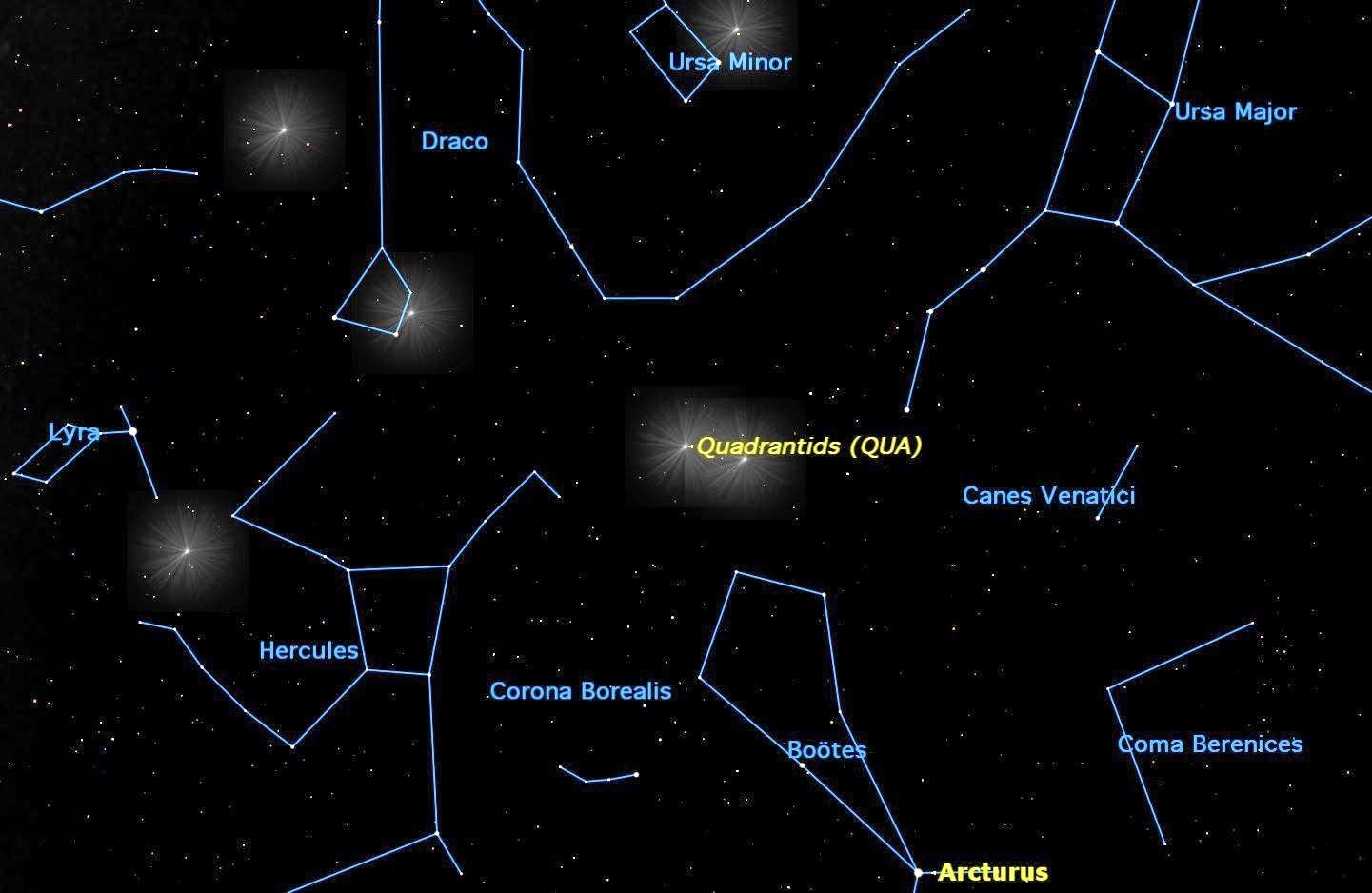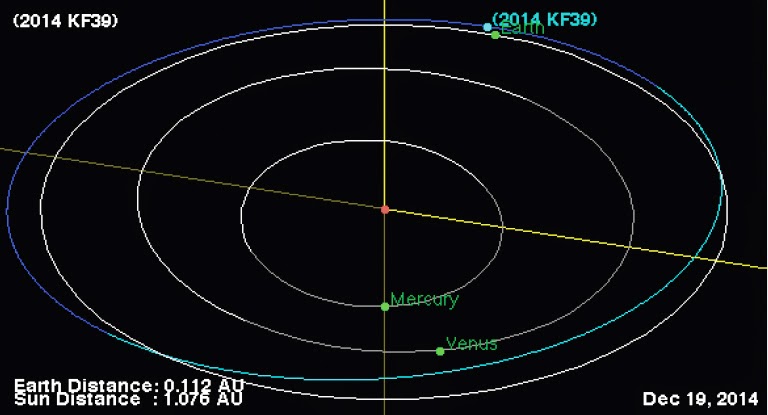Asteroid 2005 YQ96 passed by the Earth at a distance of about 3 967 000
km (10.32 times the average distance between the Earth and the
Moon, or 2.7% of the average distance between the Sun and the Earth), slightly after 9.45 pm GMT on Friday 2 January 2014. There was no
danger of the asteroid hitting us, though were it to do so it would have
presented a serious threat. 2005 YQ96 has an estimated
equivalent diameter of 160-490 m (i.e. it is estimated that a spherical
object with the same volume would be 160-490 m in diameter), and an
object of this size would be predicted to be capable of passing through
the Earth's atmosphere relatively intact, impacting the ground with an
energy equivalent to about 200-4000 megatons of TNT (roughly 11 800-235 000
times the energy of the Hiroshima bomb). Such an event
would result in a crater between 2.5 and 8 km across, cause devastation
on a global scale and would have the potential to affect the climate
globally for decades or even centuries after the impact event.
The calculated orbit of 2005 YQ96. JPL Small Body Database Browser.
2005 YQ96 was discovered on 30 December 2005by the University of Arizona's Catalina Sky Survey,
which is located in the Catalina Mountains north of Tucson. The
designation 2005 YQ96 implies that it was the 2416th asteroid (asteroid Q96)
discovered in the second half of December 2005 (period 2005 Y).
While 2005 YQ96 occasionally comes near to the Earth, it does not
actually cross our orbital path. It has an elliptical 234 day orbit, at
an angle of 22° to the plane of the Solar System, that takes it from 0.46 AU from the Sun (0.46 times the average distance at which the Earth
orbits the Sun, roughly the same as the perihelion of Mercury), to 0.99 AU from the Sun,
(0.99 times the distance at which the Earth orbits the Sun). As a Near Earth Object that remains strictly inside the orbit of
the Earth it is classed as an Atira Family Asteroid. This means that close encounters between 2005 YQ96 and the Earth are very common, with the last having occured in December 2012, and the next predicted for August 2016. The asteroid also has frequent close encounters with the planet Mercury, with the last having occured in December 2013 and the next predicted for November 2015. As an asteroid larger than 150 m in diameter that occasionally comes within 0.05 AU of the Earth, 2005 YQ96 is also classified as a Potentially Hazardous Asteroid.
See also...
The Quadratid Meteor Shower is one of the brightest meteor showers of
the year, often producing over 100 meteors per hour at its peak, which
falls on the night of 3-4 January each year, and is predicted to peak at
2.00 am GMT on Sunday 4 January 2015. The meteor...
 Asteroid 2001 XY10 passes the Earth. Asteroid 2001 XY10 passed by the Earth at a distance of about 18 540 000
km (48.22 times the average distance between the Earth and the
Moon, or 12% of the average distance between the Sun and the Earth), at...
Asteroid 2001 XY10 passes the Earth. Asteroid 2001 XY10 passed by the Earth at a distance of about 18 540 000
km (48.22 times the average distance between the Earth and the
Moon, or 12% of the average distance between the Sun and the Earth), at...
Follow Sciency Thoughts on Facebook.



